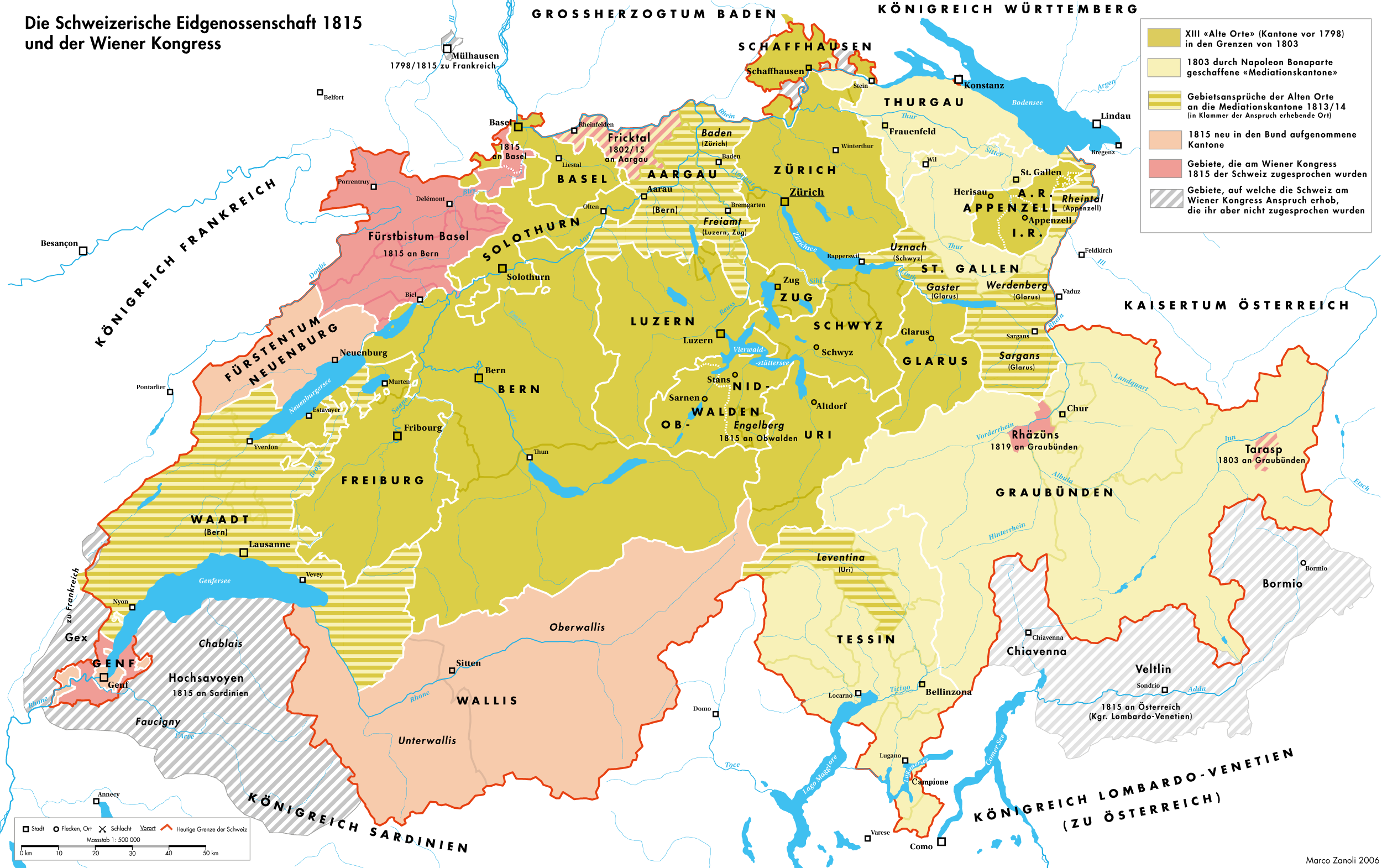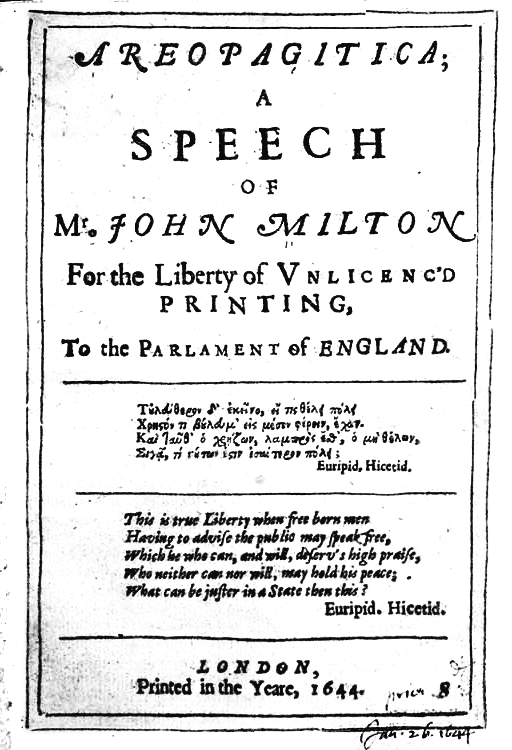|
Free Democratic Party Of Switzerland
The Free Democratic Party (, FDP; , PLD), also called Radical Democratic Party (, PRD; , PLR) was a liberal political party in Switzerland. Formerly one of the major parties in Switzerland, on 1 January 2009 it merged with the Liberal Party of Switzerland to form FDP. The Liberals. The FDP was formed in 1894 from the Radicals, who had dominated Swiss politics since the 1830s, standing in opposition to the Catholic conservatives, and who from the creation of the federal state in 1848 until 1891 formed the federal government. The FDP remained dominant until the introduction of proportional representation in 1919. From 1945 to 1987, it alternated with the Social Democratic Party to be the largest party. In 1959, the party took two seats in the magic formula. The party declined in the 1990s and 2000s (decade), as it was put under pressure by the Swiss People's Party. In response, the party formed closer relations with the smaller Liberal Party, leading to their formal mer ... [...More Info...] [...Related Items...] OR: [Wikipedia] [Google] [Baidu] |
The Liberals (Switzerland)
FDP.The Liberals (, , , ) is a Liberalism, liberal List of political parties in Switzerland, political party in Switzerland. The party was formed on 1 January 2009, after two parties, the Free Democratic Party of Switzerland, Free Democratic Party (FDP/PRD) and the smaller Liberal Party of Switzerland, Liberal Party (LPS/PLS), united. In Canton of Vaud, Vaud and Canton of Valais, Valais, the parties retain separate organisations. Its youth organisation is Young Liberals (Switzerland), Young Liberals. With 120,000 members as of 2015, the FDP has the most members of any party: 20% more than the second-placed Christian Democratic People's Party of Switzerland (CVP/PDC). The Liberals (through its FDP predecessor) are the only party that has participated in every federal government since Switzerland as a federal state, 1848 and since 2003 have been represented in the Federal Council (Switzerland), Federal Council by two members. They are the third-largest party in the National Council ( ... [...More Info...] [...Related Items...] OR: [Wikipedia] [Google] [Baidu] |
Switzerland As A Federal State
The rise of Switzerland as a federal state began on 12 September 1848, with the creation of a federal constitution in response to a 27-day civil war, the ''Sonderbundskrieg''. The constitution, which was heavily influenced by the United States Constitution and the ideas of the French Revolution, was modified several times during the following decades and wholly replaced in 1999. The 1848 constitution represented the first time, other than when the short-lived Helvetic Republic had been imposed, that the Swiss had a central government instead of being simply a collection of autonomous cantons bound by treaties. Sonderbund War In 1847, the period of Swiss history known as Restoration ended with a war between the conservative Roman Catholic and the liberal Protestant cantons (the ''Sonderbundskrieg''). The conflict between the Catholic and Protestant cantons had existed since the Reformation; in the 19th century the Protestant population had a majority. The ''Sonderbund'' ... [...More Info...] [...Related Items...] OR: [Wikipedia] [Google] [Baidu] |
Anti-clericalism
Anti-clericalism is opposition to clergy, religious authority, typically in social or political matters. Historically, anti-clericalism in Christian traditions has been opposed to the influence of Catholicism. Anti-clericalism is related to secularism, which seeks to separation of church and state, separate the church from public and political life. Some have opposed clergy on the basis of moral corruption, institutional issues and/or disagreements in religious interpretation, such as during the Protestant Reformation. Anti-clericalism became extremely violent during the French Revolution, because revolutionaries claimed the church played a pivotal role in the systems of oppression which led to it. Many clerics were killed, and French revolutionary governments tried to put priests under the control of the state by making them employees. Anti-clericalism appeared in Catholic Europe throughout the 19th century, in various forms, and later in Canada, Cuba, and Latin America. Accordi ... [...More Info...] [...Related Items...] OR: [Wikipedia] [Google] [Baidu] |
Sonderbund War
The Sonderbund War (, , ) of November 1847 was a civil war in Switzerland, then still a relatively loose confederacy of cantons. It ensued after seven Catholic cantons formed the ("separate alliance") in 1845 to protect their interests against a centralization of power. The war concluded with the defeat of the Sonderbund. It resulted in the emergence of Switzerland as a federal state, concluding the period of political "restoration and regeneration" in Switzerland. The Sonderbund consisted of the cantons of Lucerne, Fribourg, Valais, Uri, Schwyz, Unterwalden and Zug, all predominantly Catholic and governed by conservative administrations. The cantons of Ticino and Solothurn, also predominantly Catholic but governed by liberal administrations, did not join the alliance. After the (Federal Diet) declared the Sonderbund unconstitutional (October 1847) and ordered it dissolved by force, General Guillaume Henri Dufour led the federal army of 100,000 and defeated the Sonderbund ... [...More Info...] [...Related Items...] OR: [Wikipedia] [Google] [Baidu] |
Protestantism In Switzerland
The Reformed branch of Protestantism in Switzerland was started in Zürich by Huldrych Zwingli and spread within a few years to Basel ( Johannes Oecolampadius), Bern (Berchtold Haller and Niklaus Manuel), St. Gallen,( Joachim Vadian), to cities in southern Germany and via Alsace (Martin Bucer) to France. Since 1920, the Swiss Reformed Churches have been organized in 26 member churches of the Federation of Swiss Protestant Churches. In the 2000 Swiss census, 33% of Swiss population were reported as registered members of a Reformed cantonal church. By 2022, this was 22.5%, with 2.7% of the populations belonging to other Protestant denominations. History After the early death of Zwingli in 1531, his work was continued by Heinrich Bullinger, the love of the Second Helvetic Confession. The French-speaking cities Neuchâtel, Geneva and Lausanne changed to the Reformation ten years later under William Farel and John Calvin coming from France. The Zwingli and Calvin branches had eac ... [...More Info...] [...Related Items...] OR: [Wikipedia] [Google] [Baidu] |
Swiss Federal State
The rise of Switzerland as a federal state began on 12 September 1848, with the creation of a federal constitution in response to a 27-day civil war, the ''Sonderbundskrieg''. The constitution, which was heavily influenced by the United States Constitution and the ideas of the French Revolution, was modified several times during the following decades and wholly replaced in 1999. The 1848 constitution represented the first time, other than when the short-lived Helvetic Republic had been imposed, that the Swiss had a central government instead of being simply a collection of autonomous cantons bound by treaties. Sonderbund War In 1847, the period of Swiss history known as Restoration ended with a war between the conservative Roman Catholic and the liberal Protestant cantons (the ''Sonderbundskrieg''). The conflict between the Catholic and Protestant cantons had existed since the Reformation; in the 19th century the Protestant population had a majority. The ''Sonderbund'' (G ... [...More Info...] [...Related Items...] OR: [Wikipedia] [Google] [Baidu] |
Restoration (Switzerland)
The periods of Restoration and Regeneration in Swiss history lasted from 1814 to 1847. "Restoration" is the period of 1814 to 1830, the restoration of the ''Ancien Régime'' (federalism), reverting the changes imposed by Napoleon Bonaparte on the centralist Helvetic Republic from 1798 and the partial reversion to the old system with the Act of Mediation of 1803. "Regeneration" is the period of 1830 to 1848, when in the wake of the July Revolution the "restored" ''Ancien Régime'' was countered by the liberal movement. In the Protestant cantons, the rural population enforced liberal cantonal constitutions, partly in armed marches on the cities. This resulted in a conservative backlash in the Catholic cantons in the 1830s, raising the conflict to the point of civil war by 1847. Restoration When Napoleon's fall appeared imminent, the Act of Mediation was suspended in late December 1813, and lengthy discussions about future constitutions were initiated in all cantons of Switz ... [...More Info...] [...Related Items...] OR: [Wikipedia] [Google] [Baidu] |
Radicalism (historical)
Radicalism (from French ) was a political movement representing the leftward flank of liberalism between the late 18th and early 20th century. Certain aspects of the movement were precursors to a wide variety of modern-day movements, ranging from '' laissez-faire'' to social liberalism, social democracy, civil libertarianism, and modern progressivism. This ideology is commonly referred to as "radicalism" but is sometimes referred to as radical liberalism, or classical radicalism, to distinguish it from radical politics. Its earliest beginnings are to be found during the English Civil War with the Levellers and later the Radical Whigs. During the 19th century in the United Kingdom, continental Europe and Latin America, the term ''radical'' came to denote a progressive liberal ideology inspired by the French Revolution. Radicalism grew prominent during the 1830s in the United Kingdom with the Chartists and in Belgium with the Revolution of 1830, then across Europe in the 1 ... [...More Info...] [...Related Items...] OR: [Wikipedia] [Google] [Baidu] |
Liberalism
Liberalism is a Political philosophy, political and moral philosophy based on the Individual rights, rights of the individual, liberty, consent of the governed, political equality, the right to private property, and equality before the law. Liberals espouse various and often mutually conflicting views depending on their understanding of these principles but generally support private property, market economies, individual rights (including civil rights and human rights), liberal democracy, secularism, rule of law, Economic freedom, economic and political freedom, freedom of speech, freedom of the press, freedom of assembly, and freedom of religion.Generally support: * * * * * * *constitutional government and privacy rights * Liberalism is frequently cited as the dominant ideology of modern history.Wolfe, p. 23. Liberalism became a distinct Political movement, movement in the Age of Enlightenment, gaining popularity among Western world, Western philosophers and economists. L ... [...More Info...] [...Related Items...] OR: [Wikipedia] [Google] [Baidu] |
Swiss People's Party
The Swiss People's Party (, SVP; , PPS), also known as the Democratic Union of the Centre (, UDC; , UDC), is a national-conservative and right-wing populist political party in Switzerland. Chaired by Marcel Dettling, it is the largest party in the Federal Assembly, with 62 members of the National Council and 6 of the Council of States. The SVP originated in 1971 as a merger of the Party of Farmers, Traders and Independents (BGB) and the Democratic Party, while the BGB, in turn, had been founded in the context of the emerging local farmers' parties in the late 1910s. The SVP initially did not enjoy any increased support beyond that of the BGB, retaining around 11% of the vote through the 1970s and 1980s. This changed however during the 1990s, when the party underwent deep structural and ideological changes under the influence of Christoph Blocher; the SVP then became the strongest party in Switzerland by the 2000s. In line with the changes fostered by Blocher, the party s ... [...More Info...] [...Related Items...] OR: [Wikipedia] [Google] [Baidu] |
Magic Formula (Swiss Politics)
In Swiss politics, the magic formula (, , , ) is an arithmetic formula for dividing the seven executive seats on the Federal Council among the four coalition parties. The formula was first applied in 1959. It gave the Free Democratic Party (now FDP.The Liberals), the Catholic Conservative Party (later Christian Democratic People's Party, now The Centre) and the Social Democratic Party two seats each, while the Party of Farmers, Traders and Independents (now the Swiss People's Party; SVP/UDC) received one seat. The formula is not a legal requirement but the result of an agreement among the four large coalition parties. After the 2003 general election, the formula was modified, giving two seats to the SVP at the expense of the Christian Democrats. This was because the Swiss People's Party received 29% of the votes in the election, making it Switzerland's largest party by vote share. History After the election of Eveline Widmer-Schlumpf to the Federal Council in Autumn 2 ... [...More Info...] [...Related Items...] OR: [Wikipedia] [Google] [Baidu] |








